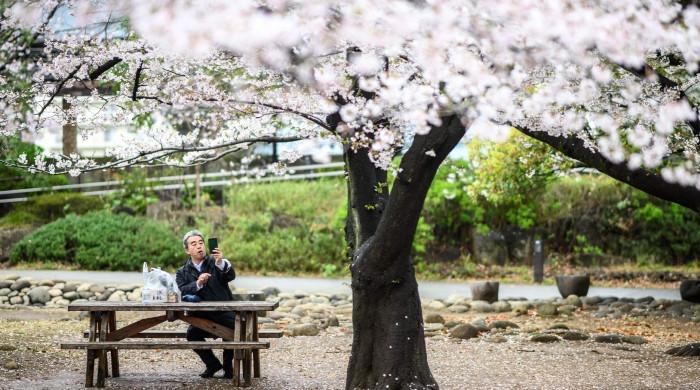AI Tool Helps Preserve Aging Cherry Trees in Japan
Japan’s iconic cherry trees, symbols of spring, are facing the challenges of old age. To aid in their preservation, a new AI tool has been developed to assess the health of these flowering trees using photographs.
The “sakura” season is a highly anticipated event in Japan, attracting both locals and tourists eager to witness the stunning blossoms that herald the arrival of spring. However, many of these trees are now between 70 and 80 years old, surpassing their prime blooming period.
Maintaining these trees and the popular viewing locations is becoming increasingly costly. In response, Kirin, a major brewing company, has created the Sakura AI Camera to assist authorities in identifying trees in need of care.
The Sakura AI Camera allows users to upload smartphone photos to a website, which then provides information on the tree’s condition and age.
Currently available only in Japanese, the tool employs a five-point scale, ranging from “very healthy” to “worrying,” to evaluate the trees. Top marks are given to trees displaying healthy flowers that bloom densely to the branch tips.
Experts helped train the artificial intelligence tool using a dataset of 5,000 cherry tree images.
The Sakura AI Camera website maps the photos, including details about each tree’s condition and location.
According to Risa Shioda from Kirin, the tool aims to address the challenges of manpower and funding required for sakura preservation. The hope is that it will facilitate better conservation planning.
Since its launch last month, approximately 20,000 photos have been collected, with the data freely accessible online to local authorities.
Worth a million
In Tokyo’s Meguro Ward, known for its cherry tree-lined riverbanks, replanting a single tree costs around one million yen ($6,800), according to ward officials.
Hiroyuki Wada from the Japan Tree Doctors Association, who inspects cherry trees in Tokyo’s major viewing spots, helped supervise the AI tool’s development. He hopes it will aid experts in studying the environmental factors contributing to the trees’ decline.
Wada partly attributes the degradation to climate change.
“I’m very worried. Changes in the environment are usually gradual, but now it’s visible,” he told AFP.
He added, “There are impacts from the heat, and of course the lack of rainfall. The age of the trees naturally makes the situation more serious.”
Japan’s weather agency reported that last year was the hottest on record, a trend observed in other countries as well.
To give back to the communities, Kirin began donating a portion of its profits to cherry tree preservation efforts last year.
Shioda noted that alcohol, particularly beer, is a popular beverage at “hanami” flower-viewing parties held beneath the cherry trees.
In Japanese culture, cherry blossoms represent the transient nature of life, with their full blooms lasting only about a week before the petals begin to fall.
The season also symbolizes change, marking the start of the new business year when university graduates begin their careers and older colleagues transition to new roles.



Comments (0)
No comments yet. Be the first to comment!
Leave a Comment